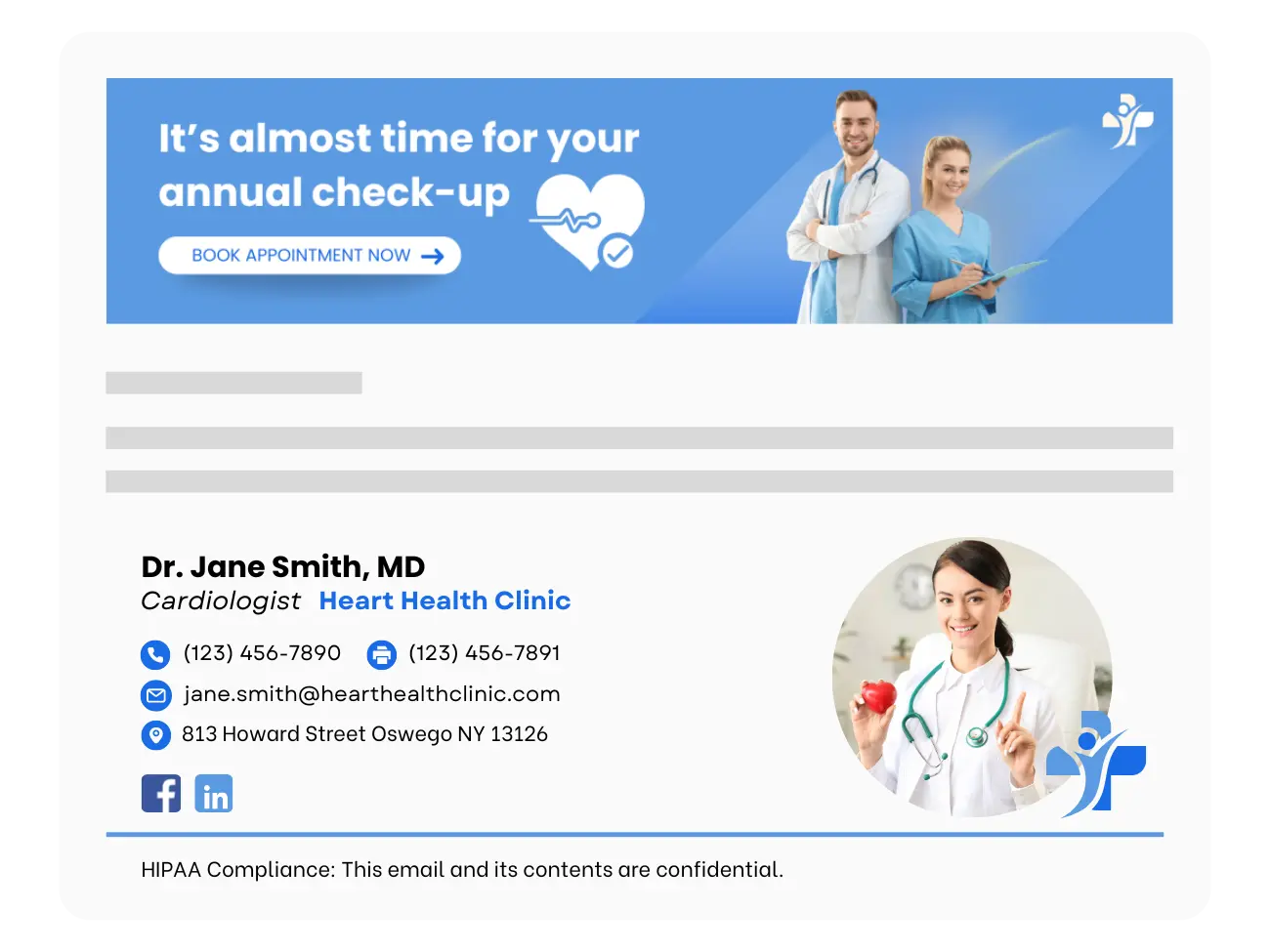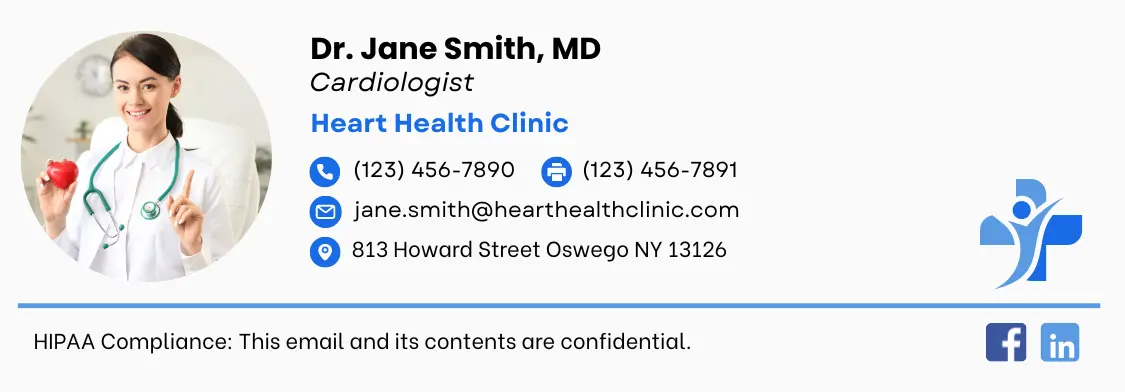Risks, Penalties, and Solutions in the US Healthcare and Pharmaceutical Sector
By Eszter Nagy
HIPAA-compliant email communication poses crucial challenges for healthcare providers and their business associates in the US. This secure and encrypted method of conveying healthcare data is not only mandated by law but is instrumental in safeguarding sensitive information from being compromised.
Unfortunately, traditional email systems fall short of these stringent security requirements, rendering them an unsafe choice for transmitting Protected Health Information (PHI). Whether developing an in-house secure system or opting for a HIPAA-compliant email provider, ensuring the privacy rule is adhered to is paramount.
This article will offer a roadmap for healthcare professionals and sales individuals who want to enhance their email communication while complying with HIPAA regulations.
What is HIPAA in US healthcare?
HIPAA, the Health Insurance Portability and Accountability Act, is a pivotal federal law in the United States. It was established to safeguard sensitive patient data from being disclosed without their consent or knowledge.
Enacted on August 21, 1996, by President Bill Clinton, HIPAA has set the standard for protecting privacy in the healthcare sector. This legislation comprises five main titles, with Title II being particularly significant since it directly addresses the confidentiality of individually identifiable health information.
Title II of HIPAA, also known as the Administrative Simplification Provisions, mandates the establishment of national standards for electronic healthcare transactions as well as national identifiers for providers, health insurance plans, and employers.
Its core aim was to improve the efficiency and effectiveness of the healthcare system by standardising the interchange of electronic data for specific administrative and financial transactions. This section of the law is mission-critical for maintaining the integrity, and availability of patient information and includes the Privacy Rule and the Security Rule.
Understanding HIPAA compliant emails
HIPAA-compliant email is a critical tool for healthcare professionals, ensuring the protection of patient health information (PHI). To meet HIPAA standards, email communications must incorporate robust security measures, including access controls, audit controls, integrity controls, ID authentication, and transmission security mechanisms.
These measures are expressly designed to prevent unauthorised access to guarantee the confidentiality, integrity, and availability of electronic PHI.

Essential components for HIPAA-compliant email marketing
As mentioned earlier, HIPAA was established to safeguard sensitive patient health information from disclosure without the patient’s consent or knowledge. It also has a section that aims to maintain the confidentiality, integrity, and availability of patient information.
To achieve compliance, organisations must adhere to two primary components: the Privacy Rule and the Security Rule. The Privacy Rule imposes national standards for protecting health information that can be used to identify a person.
The Security Rule, on the other hand, tells covered entities what administrative, physical, and technical measures they must take to make sure that electronic protected health information (e-PHI) is kept private, correct, and available.
The Office for Civil Rights (OCR) under the Department of Health and Human Services (HHS) keeps an eye on and enforces adherence to these rules. HIPAA’s comprehensive approach ensures that sensitive patient information is handled with the utmost care. Thus, providing peace of mind to patients and healthcare providers alike.
With those rules in mind, here are some essential components that must be integrated into HIPAA-compliant email marketing efforts:
- Explicit consent and opt-out mechanisms:
- Obtaining explicit consent: It is crucial that patients explicitly consent to receive marketing emails. This consent should be documented in writing, ensuring that patients are fully aware of and agreeable to the communications they will receive.
- Easy opt-out options: Compliance also demands that patients can easily withdraw their consent, or opt-out, at any time. This process should be straightforward and easily accessible, ensuring that patients feel comfortable with their level of engagement.
- Encryption and data protection:
- Mandatory encryption: To protect protected health information (PHI) within emails, encryption is non-negotiable. Using advanced encryption solutions ensures that data remains unreadable to unauthorised parties both in transit and at rest.
- Secure email platforms: Choosing email vendors that can sign Business Associate Agreements (BAAs) is essential. Providers like LuxSci and Paubox offer robust security features tailored to comply with HIPAA standards, ensuring that PHI is handled securely.
- Compliance and trust building:
- Comprehensive security protocols: Implementing proper security measures, such as multi-factor authentication and secure servers, helps safeguard sensitive information. These protocols not only protect PHI but also fortify the trust between patients and healthcare providers.
- Regular compliance training: It is fundamental to educate staff on HIPAA-compliant practices and the importance of security in email communications. Continuous training ensures that all staff members are aware of the protocols and contribute to the organisation’s compliance efforts.
How to set up a HIPAA compliant email?
Establishing HIPAA-compliant email infrastructure requires careful consideration of various factors, including encryption technologies, access controls, and compliance monitoring tools. Let’s explore some essential steps to ensure HIPAA compliance in email communication:
1. Use HIPAA-compliant email management tools for healthcare communication
When selecting email management tools, prioritise providers that offer end-to-end encryption and the willingness to sign Business Associate Agreements (BAAs).
These agreements formalise the responsibilities of third-party service providers in safeguarding PHI and ensuring accountability and compliance.
2. Utilise HIPAA-compliant email encryption technologies
Implementing end-to-end encryption and Transport Layer Security (TLS) protocols is crucial for securing email transmission and protecting PHI from unauthorised access.
3. Email archiving and access controls
In addition to encryption, organisations should invest in secure email archiving solutions to adhere to HIPAA’s data retention requirements.
Role-based access controls further enhance security by limiting access to PHI based on users’ roles and responsibilities within the organisation.
4. Compliance and monitoring tools
Automated compliance checks and comprehensive audit trails are indispensable tools for ensuring ongoing compliance with HIPAA regulations.
By proactively monitoring email activities and detecting potential breaches, organisations can swiftly address compliance issues and mitigate risks.
5. Integrated solutions for seamless compliance
Consider adopting unified communications platforms that seamlessly integrate email with other communication tools, streamlining workflows while maintaining compliance.
Third-party integrations with patient management systems and other relevant software ensure smooth operation without compromising security.
HIPAA compliant email signature management
An often overlooked aspect of HIPAA compliance is email signature management, which plays a crucial role in legal compliance and brand consistency.
Services like Rocketseed’s legal and compliance solutions are tailored to the unique needs of healthcare and pharmaceutical organisations. Some key features include:
- Compliant email signature design: This ensures that all outgoing emails carry a standard format that includes necessary legal disclaimers and confidentiality notices. This uniformity not only reinforces professional communication but also helps in maintaining compliance with HIPAA regulations.
- Central control for compliance: Streamlining the management of email signatures across the organisation ensures consistency and compliance. Updates and changes to signatures, such as adding disclaimers or legal notices, can be rolled out quickly and uniformly, minimising the risk of non-compliance.
- Email legal compliance disclaimer for HIPAA: Including legally compliant disclaimers in email signatures to mitigate liability risks.
- Dynamic email signature disclaimers: These adjust the content of the email signature based on the recipient or the nature of the email. For instance, emails containing PHI can automatically include a more stringent confidentiality notice, enhancing compliance based on communication context.
- Create disclaimer by department: Customising disclaimers based on departmental requirements, ensuring precision and clarity.
- Confidentiality, Codes of Conduct, and Copyright: Incorporating additional legal and ethical considerations into email signatures to reinforce compliance and professionalism.
- Adherence to email compliance best practices: Staying abreast of evolving regulations and industry standards is necessary to ensure continued compliance and effectiveness.

Conclusion
Ensuring the confidentiality, availability, and integrity of Protected Health Information (PHI) is not merely about adhering to regulatory mandates. It is about fostering a secure and trustful environment where patient information is handled with the utmost care.
As we’ve explored, implementing robust HIPAA-compliant email solutions, along with efficient email signature management practices, are pivotal steps in achieving this objective.
Recognising the evolving scope of digital communication in healthcare, continuous learning and adaptation to innovative technologies and practices are essential.
Services such as those offered by Rocketseed for email signature management can play a crucial role in maintaining compliance and enhancing patient care standards in the digital age.
